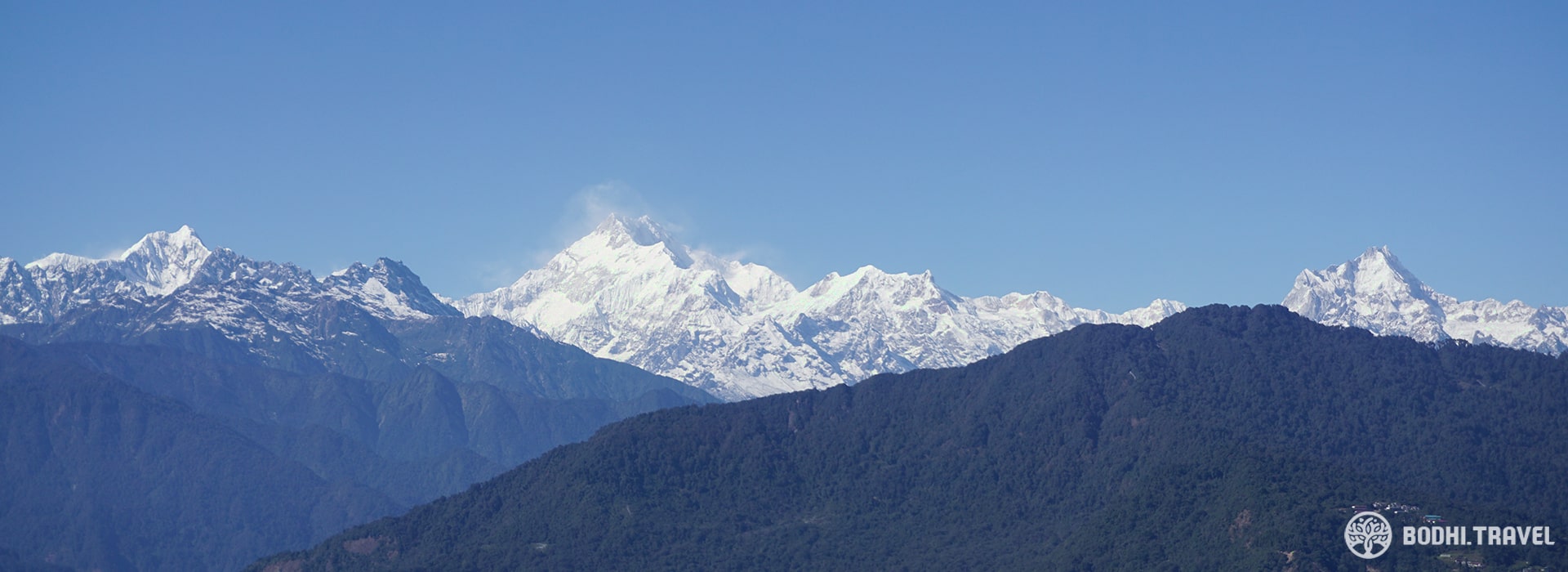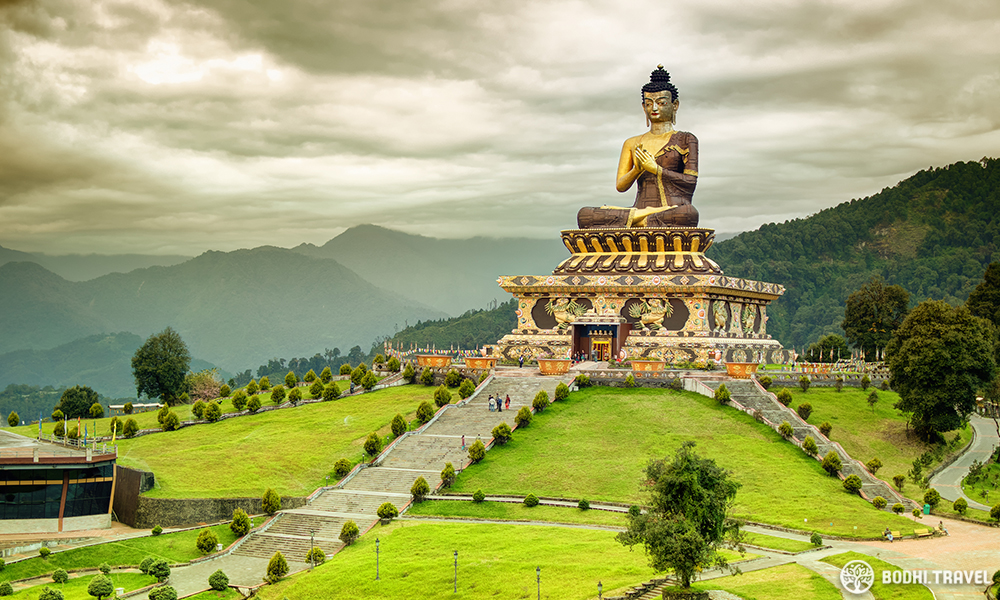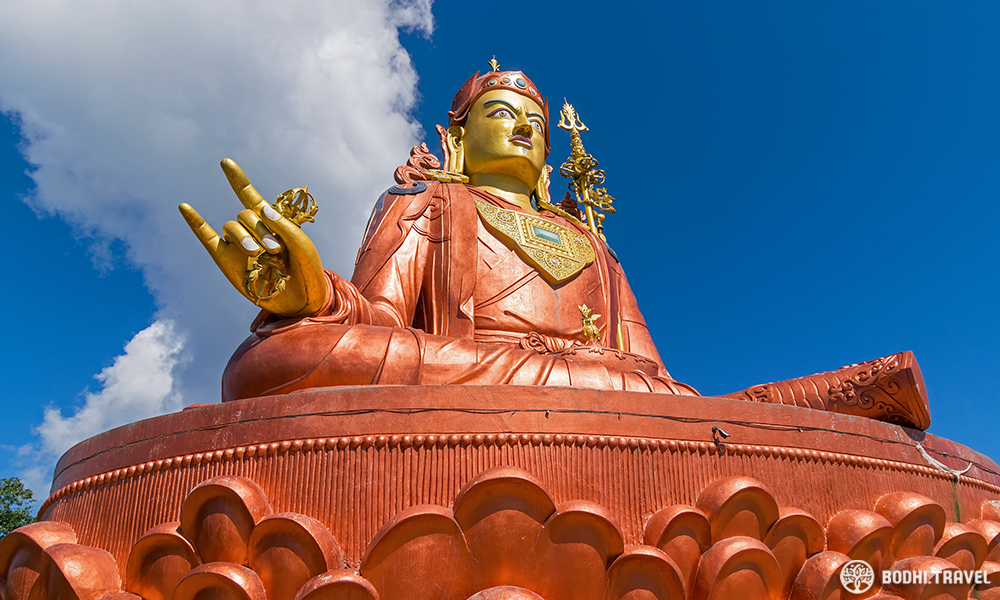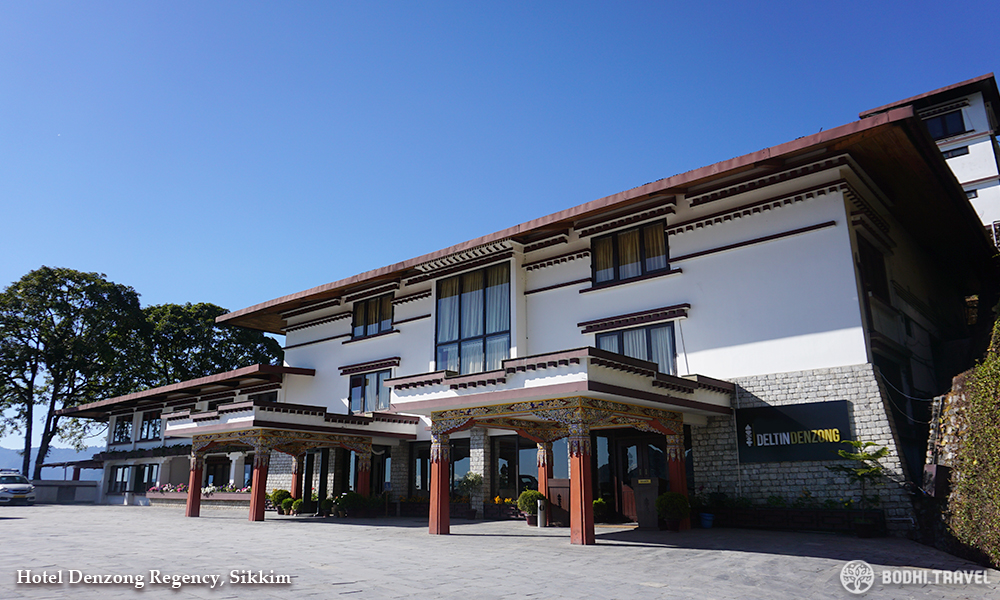
3 Big Reasons to Visit Sikkim
BODHI ADMIN - Posted on September 26, 2019 - 4,809 Views
Sikkim is known for its pristine nature reserves and the Himalayan mountain range. It is also known as a state with deep Buddhist culture. In fact, Buddhism is a living culture in Sikkim with many monasteries and Buddhists. The Sikkim state government is also very supportive of Buddhism and had built three huge Buddhist statues for Buddhist devotees and also to attract Buddhist pilgrims to the state.

Tathagata Tsal (Buddha Park)
Forming an arresting vanguard to the mighty peaks of Mt Narsing and towering above all else, peaceful and poised, the majestic statue of the Tathagata commands the heart of the Tsal while the pulse of its influence throbs throughout the hills of Rabong.
The statue itself is 98 feet in height; the inclusion of the thri (pedestal or the lotus throne) elevates it to a total height of 137 feet. The proportions of the statue were taken from the Gega Lama, the authoritative Tibetan manual for religious artwork.
Made of 60 tonnes of copper and three-and-a-half kilogrammes of gold, the statue employs the repoussé technique, one of the oldest metal-working practices in the world. Most Buddhist artworks depict the Buddha in a meditative pose while his hands perform various mudras. The statue at the Tsal depicts the sage in the Dharmachakra mudra.
The Dharmachakra mudra is formed when the thumb and index finger of both the hands touch at their tips to form a circle. This circle symbolises the Wheel of Dharma which was set in motion when the Buddha gave his first sermon at Sarnath.
The entire complex of the Tathagata Tsal is dotted with important structures. The red-domed Congregation Hall, which can seat up to 2000 people, is one of the biggest venues in Sikkim built solely for the purpose of religious convocations. At the Tongchoe Lhakhang, visitors can light choemis (butter lamps) in memory of their loved ones.
* the term Tathagata is a Pali and Sanskrit term that the Shakyamuni Buddha used to refer to Himself in the Buddhist scriptures. Translated into “He who has come” or “He who has gone”, the Tathagata is One who has transcended ordinary existence.

Samdruptse Hill Namchi
Samdruptse literally means 'wish fulfilling hill' in the Bhutia language. A unique, awe inspiring and gigantic 135 feet high statue of Guru Padamasambhava is installed atop Samdruptse. It is the highest statue of Guru Padamasambhava in the world. His Holiness the Dalai Lama laid the foundation stone of the statue in October 1997. It took nearly three years to complete the statue.
Guru Padmasambhava, also known as Guru Rinpoche, blessed Sikkim more than 1200 years ago. This statue is therefore a fitting tribute to this patron saint of Sikkim. The statue funded by the State Government was constructed and installed by His Eminence Dodrupchen Rinpoche and members of his Chorten trust. The message of love, compassion, peace and harmony is aimed to spread throughout the world from this historic hill.
* Guru is Sanskrit for “teacher or master” and means spiritual teacher in Tibetan Buddhism. Rinpoche is an honorific term meaning “precious jewel” and is reserved for important Tibetan Buddhist teachers. -- https://www.lionsroar.com/what-does-rinpoche-mean/
Chenrezig Pelling
Chenrezig is Tibetan for Avalokiteshvara Bodhisattva, also known as GuanYin in Chinese Mahayana tradition. Immensely popular in Asia, Chenrezig/ Avalokiteshvara/GuanYin is the manifestation of compassion and is depicted in different forms (including both male and female).
Officially opened in November 2018 after close to 10 years of construction (which started in 2009), the four-armed Chenrezig statue is 137ft tall and located at the beautiful west Sikkim town of Pelling (altitude 7,200 ft), the statue is also the highest Chenrezig statue in the world.
Located near the statue is the Sanga Choeling Monastery which was built in the 17th century, making it one of the oldest monasteries in the state. There is also the skywalk, a glass-bottomed pathway for those who likes the thrill of seeing the ground behind them.

Intrigued? If you wish to see these three Buddhist statues whilst enjoying the Himalayan landscapes, itineraries are available at less than $1000 a head (excluding airfares and subject to group size).
Speak to us now for more information! Email: [email protected]
MORE ARTICLES: [Travel Reflection] Breathtaking Himalayas - Sikkim (1/2)
MORE ARTICLES: [Travel Tips] Essential Items Tips for Travelling




